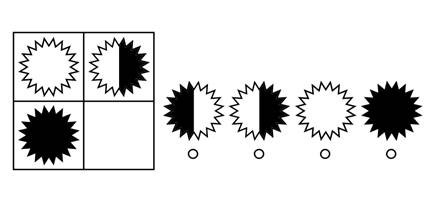
Here’s a look at each section of the test and some sample item types:

The bundles presented below will help prepare students for both versions of the test (and include Figure Analysis practice for Kindergarten students). Also, figural analysis questions are now included at the Kindergarten level. The main differences between Form 6 and Form 7 are the primary level questions (Kindergarten through 2nd grade), which are now picture based as opposed to word based. Form 6 is still in use, but most schools have transitioned to Form 7. The latest edition of the CogAT® is Form 7 (7th edition). CogAT’s measurement of the three reasoning areas helps provide a balanced view of the child’s potential for academic success. Reasoning is synonymous with learning and problem-solving. CogAT® is often paired with the Iowa Tests of Basic Skills® (ITBS®) to show a more complete picture of a student’s abilities. The test measures students’ reasoning abilities in the three areas that are linked to academic success: Verbal Reasoning, Non-Verbal Reasoning, and Quantitative Reasoning. The CogAT® (Cognitive Abilities Test™) is published by Riverside Publishing, a Houghton Mifflin Company. The Cognitive Abilities Test™ or CogAT® is commonly utilized as part of the entrance process for students who have been identified as potentially gifted and talented.


 0 kommentar(er)
0 kommentar(er)
